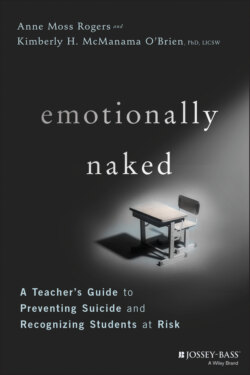Читать книгу Emotionally Naked - Anne Moss Rogers - Страница 33
Post-Traumatic Stress Disorder (PTSD)
ОглавлениеTo develop PTSD, an individual must have been exposed to actual or threatened death, serious injury, or sexual violence either directly or indirectly. Someone with PTSD can be jumpy, irritable, violent, or have trouble sleeping and concentrating after experiencing or witnessing a harmful, terrifying, or upsetting event.31 Any kind of extreme stress can lead to PTSD. For teens this can be the result of physical, emotional, or sexual abuse, undergoing major surgery, loss of a loved one, community violence or unrest, or natural disasters.
The prevalence of trauma exposure among youth is a major public health concern. Youth who have been exposed to trauma, whether a one-time event or repeated, can respond by withdrawing from others or they can be the students who threaten others or start fights. Youth affected by trauma can also have a decreased IQ and reading ability, lower grade-point average (GPA), more days of school absence, and decreased rates of high school graduation.32,33 Evidence suggests that youth exposed to trauma have decreased social competence and increased rates of peer rejection.34 Like conduct disorder symptoms, the behavior of these students often challenges the patience of educators. In these cases we encourage teachers to think, “What happened to you?” instead of “What's wrong with you?”35 If you notice students exhibiting characteristics that may indicate any of these mental illnesses, do refer them to your counseling staff for assessment because they may need additional intervention to be successful in school.
